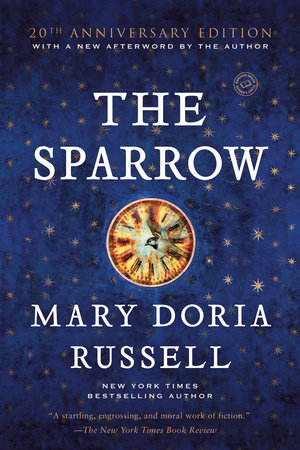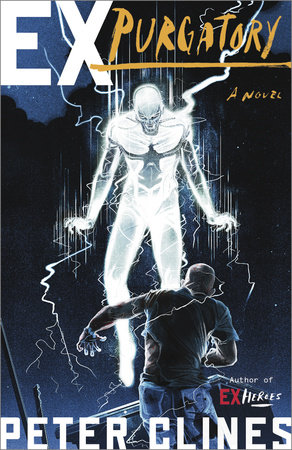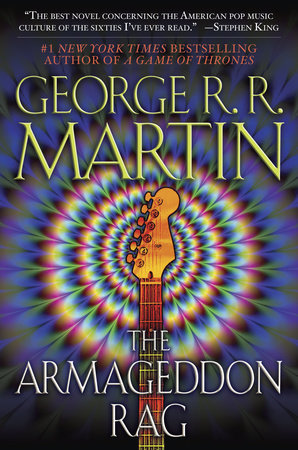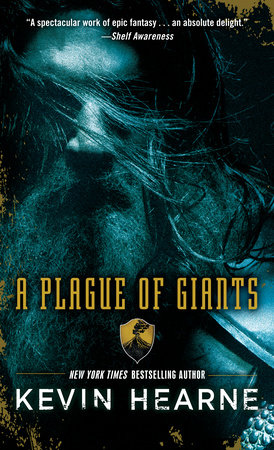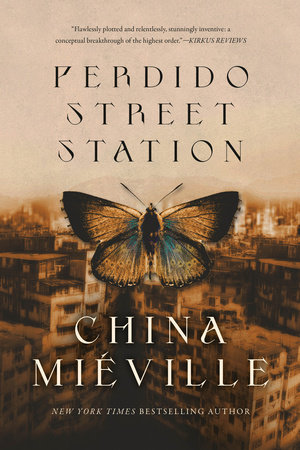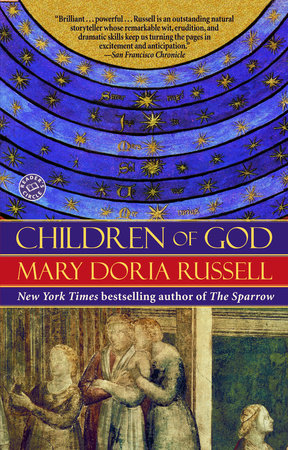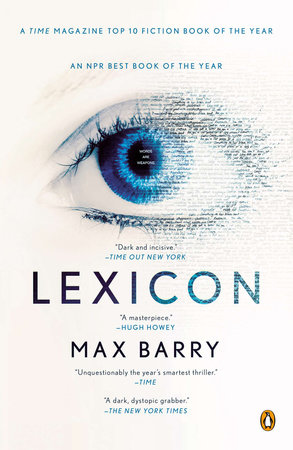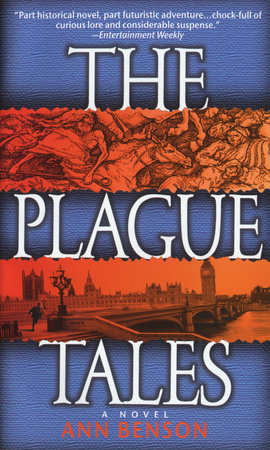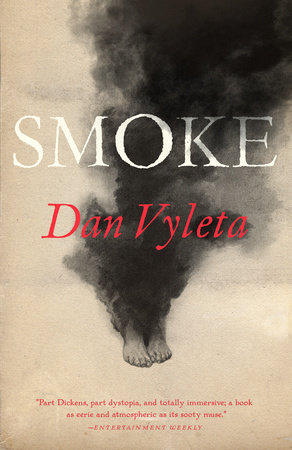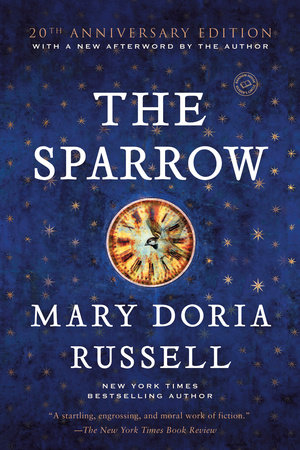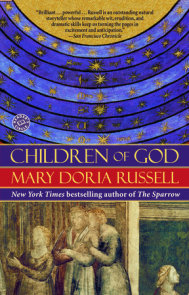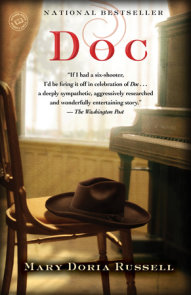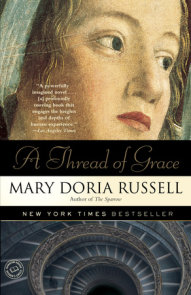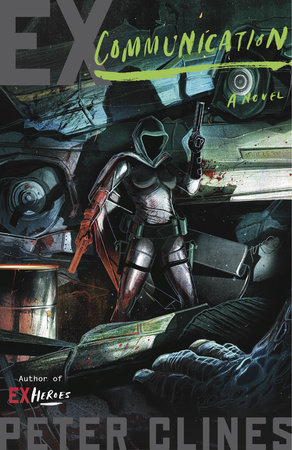Author Q&A
A Conversation with Mary Doria Russell
Random House Reader’s Circle: Until The Sparrow you had only written serious scientific articles and technical manuals. How did you end up writing a speculative novel?
Mary Doria Russell: The idea came to me in the summer of 1992 as we were celebrating the 500th anniversary of Columbus’s arrival in the New World. There was a great deal of historical revisionism going on as we examined the mistakes made by Europeans when they first encountered foreign cultures in the Americas and elsewhere. It seemed unfair to me for people living at the end of the twentieth century to hold those explorers and missionaries to standards of sophistication and tolerance that we hardly manage even today. I wanted to show how very difficult first contact would be, even with the benefit of hindsight. That’s when I decided to write a story that put modern, sophisticated, resourceful, well-educated, and well-meaning people in the same position as those early explorers and missionaries–a position of radical ignorance. Unfortunately, there’s no place on Earth today where “first contact” is possible–you can find MTV, CNN, and McDonald’s everywhere you go. The only way to create a “first contact” story like this was to go off-planet.
RHRC: How did religion come to play such a central role in the story?
MDR: At the time I wrote this I was in the process of bringing religion back into my own life. I was brought up as a Catholic but left the Church in 1965 when I was fifteen. After twenty years of contented atheism I became a mother. Suddenly I was in a position of having to transmit my culture to my son. I needed to decide what things to pass on and what things to weed out. I realized my ethics and morality were rooted in religion and began to reconsider those decisions I had made when I was young. I found myself drawn to Judaism and eventually converted. When you convert to Judaism in a post-Holocaust world, you know two things for sure: one is that being Jewish can get you killed; the other is that God won’t rescue you. That was the theology I was dealing with at the time. Writing The Sparrow allowed me to look at the place of religion in the lives of many people and to weigh the risks and the beauties of religious belief from the comfort of my own home.
RHRC: What exactly are the risks and beauties of religion?
MDR: The beauty of religion is the way in which it enriches your understanding of what your senses tell you. I see no conflict between scientific and religious thought. They are just two very different ways of interpreting what we see all around us. What I gained was a cultural depth, a perspective that reaches back 3,200 years. There’s a certain kind of serenity that comes from knowing that the ethics you draw on have been tested and re-tested by one thousand generations in every possible cultural and ethical climate, and that they have been found reliable and useful by so many people for so long under many different circumstances. The risks have to do with believing that God micromanages the world, and with seeing what may be simply coincidence as significant and indicative of divine providence. It’s very easy then to go out on a limb spiritually, expect more from God than you have a right to expect, and set yourself up for bitter disappointment in his silence and lack of action.
RHRC: Where did the idea come from for the two alien races on Rakhat, the Runa and the Jana’ata?
MDR: It started with a look at two australopithecine species from Earth’s prehistory: herbivores and carnivores/scavengers. I began by thinking, What would it be like if the herbivores were still around? That was the beginning of the idea. Then I asked myself, What would civilization be like if a carnivore had domesticated its prey species?
That’s where I came up with the idea for the relationship between the Jana’ata and the Runa. The Jana’ata are a carnivorous herding society that breed their prey, the Runa, for intelligence and adaptability as well as meat.
RHRC: What’s the hardest thing about using two narrative lines to tell a story?
MDR: Pacing. You have to stop and think, Who does the reader want to be with now? Some time ago I realized the books that kept me turning pages were the ones that had two or more story lines. It’s a structure I admired as a reader. As a writer, having two story lines proved to be of great value. When I played out my imagination in one story line I could take a break from it and turn to the other with fresh enthusiasm. The tricky part is in introducing two separate sets of characters in the first one hundred pages. There’s a lot of setup that goes into it and you have to keep readers interested while developing the new characters.
RHRC: What sort of writing routine do you have?
MDR: I sit down in the morning when my husband’s at work and my son’s at school, and I spend seven hours in front of the computer. My working method is to make yardage every day. I don’t expect to throw a long bomb each time I sit down to write. Occasionally a whole chapter does come all at once but that’s the exception rather than the rule. The main thing to remember is that writing happens by doing the writing.
RHRC: Are any of your characters based on real people?
MDR: Some of them are. Anne and George share a biography with my husband and me, within certain limitations. Anne was willing to go to another planet and I won’t even go camping. Nevertheless, she speaks fairly clearly in my voice. I used my brother’s voice for John Candotti. There’s a kind of “Chicago attitude” in his character that came from my brother. There were also real people who gave the voice of D.W. One of them is a Texas congressman and the other a real-life New Orleans provincial. Emilio is his own person. I know nobody like him. I’m not sure I could be friends with a person like that. He’s too intense in a lot of ways. Sofia is also her own person.
RHRC: Why did you use the Jesuits as main characters and how did you gain such insight into their world?
MDR: The reason for using the Jesuits was simple logic. If we were to receive incontrovertible evidence of an extraterrestrial culture that could be reached in a human lifespan, who would go? I thought of the Jesuits because they have a long history of first contact with cultures other than their own. The problem was I knew no Jesuits at the time I wrote this. And you can’t just knock on a Jesuit’s door and say “I’m writing a first novel about Jesuits in space. Tell me your intimate thoughts about being a priest.” What I did have, however, was access to dozens and dozens of autobiographies written by priests and ex-priests during the last thirty years. Since Vatican II, 100,000 priests have left the active priesthood. Many priests have written autobiographies in which they discuss the motives that brought them to the life, the satisfactions and frustrations of the priesthood, why they decided to leave it behind, or why they remained true to the vocation.
RHRC: One reviewer calls this “a parable about faith–the search for God, in others as well as Out There.” Another says it’s about “the problem of evil and how it may stand in the path of a person’s deepest need to believe.” How do you describe the themes in this book?
MDR: The central theme is an exploration of the risks and beauties of religious faith. If there isn’t a God, then Emilio Sandoz is all alone. And yet he’s terrified of the God he thinks he has discovered. But the story also revolves around the theme of family. One of the things I noticed after the story was finished was that all the main characters are childless, and yet they create a family for themselves. They relate to one another as son and daughter, brother and sister, uncle and aunt, grandparent and grandchild. It seems to me that this kind of spiritual kinship is tremendously important to all the people in this book. And the fact that they don’t have close genetic kin–they have no children to leave on Earth–gives them a kind of wistful freedom. Anne and George would have made terrific parents but they’re childless. Emilio, Jimmy, and Sofia become their surrogate kids. Those ties–that spiritual tension–was every bit as strong and resilient as genetic ties– perhaps even stronger.
RHRC: Why did The Sparrow have to end the way it did?
MDR: Because I needed to ask questions in their starkest terms. What happens to Emilio Sandoz is a holocaust writ small. He survives, but loses everyone. Now he has to live in its aftermath.
RHRC: What’s the moral of this story?
MDR: Maybe it’s “Even if you do the best you can, you still get screwed.” We seem to believe that if we act in accordance with our understanding of God’s will, we ought to be rewarded. But in doing so we’re making a deal that God didn’t sign on to. Emilio has kept his end of a bargain that he made with God, and he feels betrayed. He believes he has been seduced and raped by God, that he’s been used against his will for God’s own purpose. And I guess that’s partly what I’m doing with this book. I wanted to look at that aspect of theology. In our world, if people believe at all, they believe that God is love, God is hearts and flowers, and that God will send you theological candy all the time. But if you read Torah, you realize that God has a lot to answer for. God is a complex personality. I wanted to explore that complexity and that moral ambiguity. God gives us rules but those are rules for us, not for God.
RHRC: How did you follow up the story?
MDR: I wrote a sequel to The Sparrow titled Children of God. Emilio Sandoz goes back to Rakhat, but only because he has no choice. God is not done with him yet.
RHRC: What was the toughest thing about writing the sequel?
MDR: The fact that there are so many people who are passionate about the original characters and care so much about the issues. Writing a sequel was a real high-wire act. I had to be able to reproduce those elements of the first book that people responded to strongly but I didn’t want to repeat myself. I had to break new ground. I hope that I have done that but it has not been an easy trick to pull off. What the second book does is reverse the story’s emphasis–two thirds of the action takes place on Rakhat and one third on Earth. Children of God explores what happens to the people on Rakhat because Emilio Sandoz was there. There are children born because of him, and children are always revolutionary. Things that we would put up with ourselves can become intolerable when we see our children forced to face the same circumstances.
RHRC: What do you want readers to get out of this book?
MDR: That you can’t know the answer to questions of faith but that the questions are worth asking and worth thinking about deeply.
